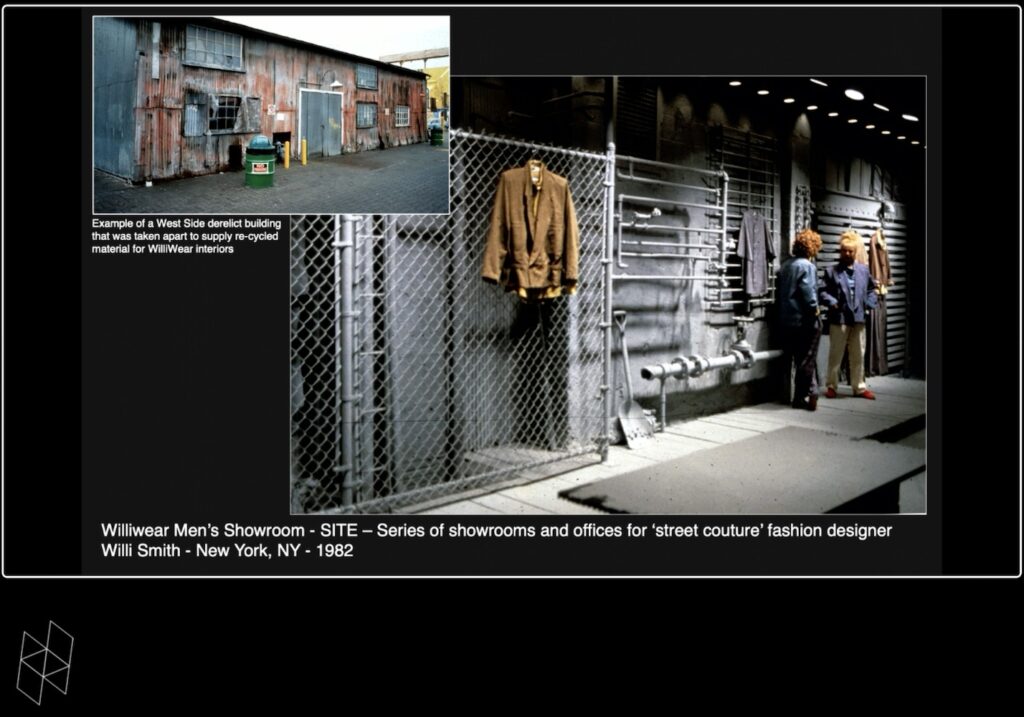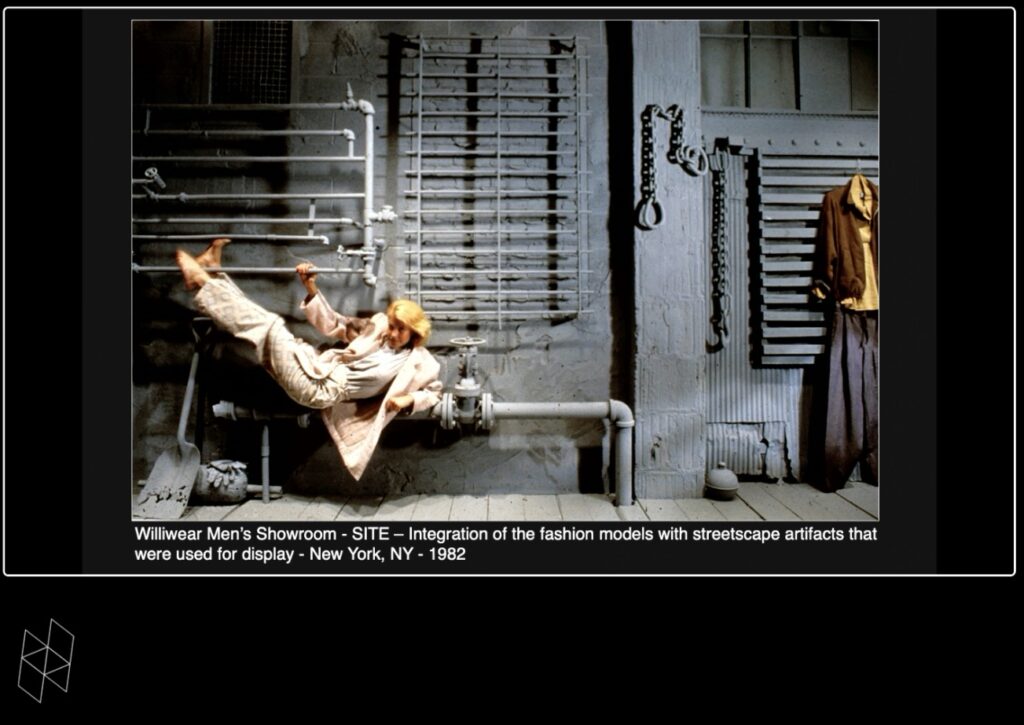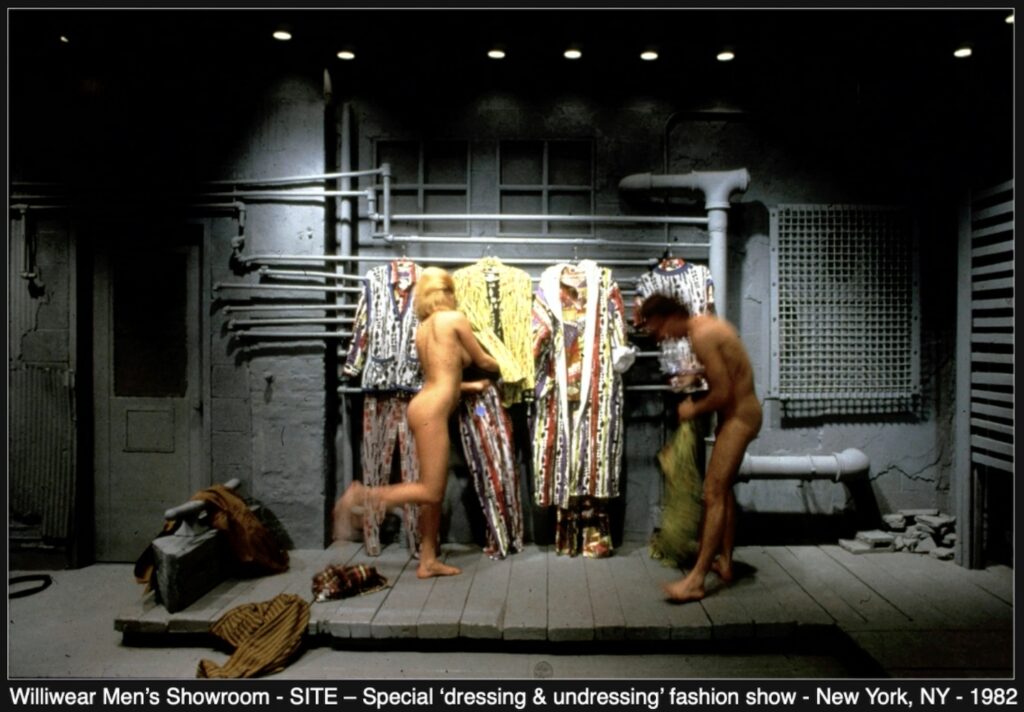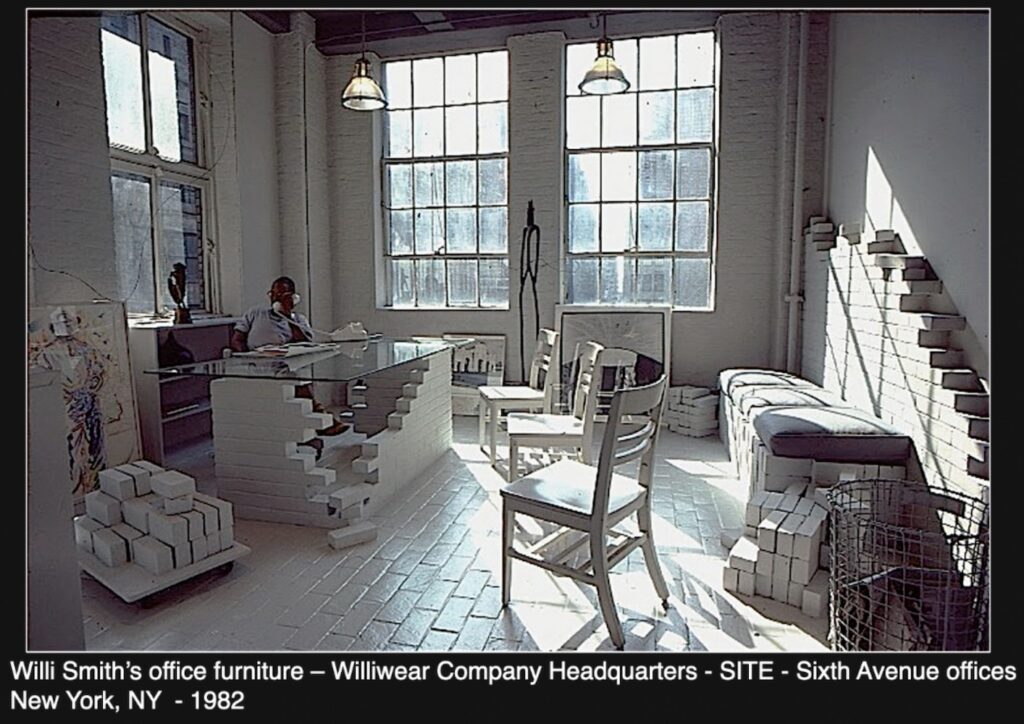
SITE founder James Wines spoke at Harvard GSD last night for the first–but hopefully not last–time in his 90 years. [It was great, and available online. s/o Alexandra Lange]
Though SITE is most frequently brought up in an architectural context for their BEST Products stores, a project that jumped out at me from Wines’ talk was the 38th Street showroom he and SITE partner Alison Sky created for WilliWear, the groundbreaking ’80s street fashion label of designer Willi Smith. SITE and Smith both had a love for found materials, salvage, junk, and the fabric of the city. Wines talked about how Smith took him on inspo trips to seedy gay clubs on the West Side, and then they’d jack construction material, hardware, plumbing, fencing, bricks, you name it, which ended up artfully installed in the showroom.

SITE’s simple genius was to #monochrome it all out, painting everything a highly aesthetic, and flattering backdrop grey. A runway rulebreaker, Smith used the showroom for fashion shows, too, which, Wines giddily announced, included much nudity.

SITE has used the monochrome strategy in other contexts, to great effect; Wines mentioned how it helps make the public notice each other, and to look good to each other. He didn’t mention Warhol, though, or the Silver Factory, which had a similar effect almost twenty years earlier.
And he didn’t mention if a young Cady Noland worked as an intern at WilliWear, or as a fashion reporter cutting her chops covering these performance art-like shows. But this urban hardwarescape is definitely putting off a Nolandian vibe, which is something I’d not considered before.

Wise also didn’t mention SITE’s design for the Willi Smith retrospective at the Cooper Hewitt. Which, the much-anticipated show opened, haplessly, at the beginning of March 2020 and existed–I can’t say it was open or closed–until the end of 2021. I can’t find any photos; maybe no one saw it in person?
He did mention Rauschenberg as an American Arte Poverist and an inspiration, which Hilton Als had just mentioned, too, in his review of the JAM show at MoMA: “if there is a Black aesthetic it’s about making do, and using what little you have to express who you are.” JAM was Smith’s era, but it’s not clear if it was Smith’s jam; there don’t seem to be any mentions of JAM or Linda Goode Bryant in the Willi Smith Community Archive (yet).

I did not see the Willi Smith desk turn up in Miami last year. Wines recreated the pile of scavenged bricks and glasstop desk from Smith’s office for Friedman Benda. It is/was available in an edition of 10, though I think he’d respect a bootleg. If you want to head out to a construction site tonight, I’ll bring the car around.
Margaret McCurry Lectureship in the Design Arts: James Wines [harvard.edu]
SITE site [sitenewyork]
Willi Smith: Street Couture [cooperhewitt.org]
